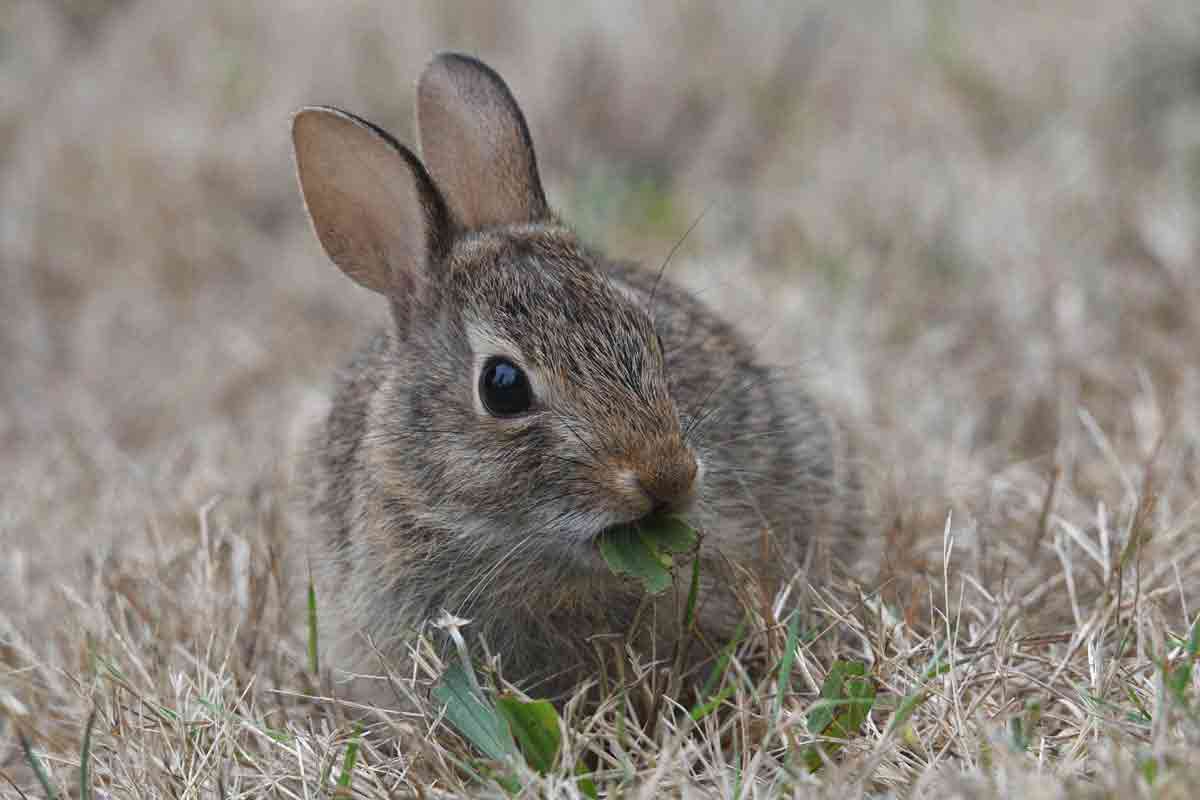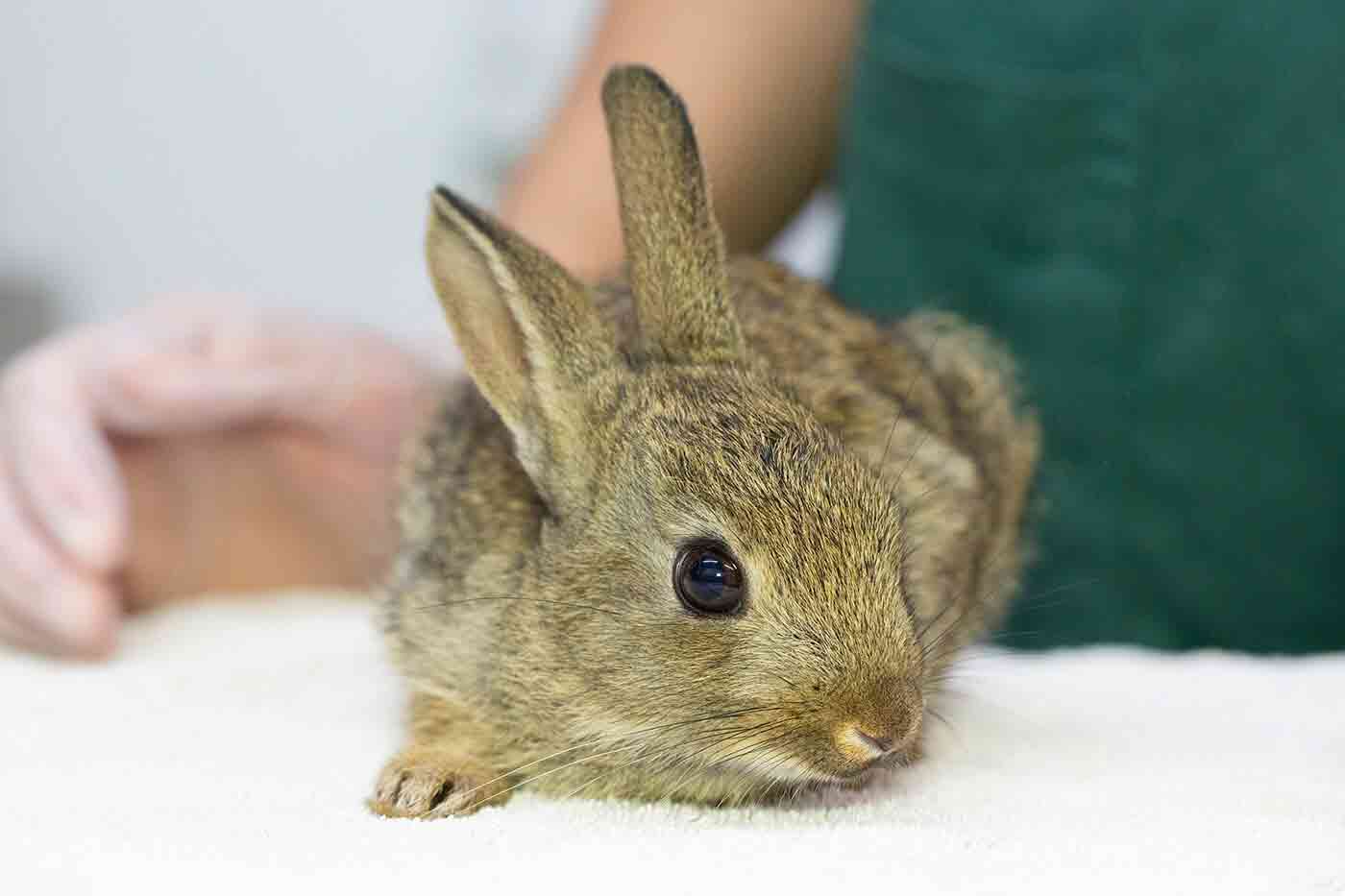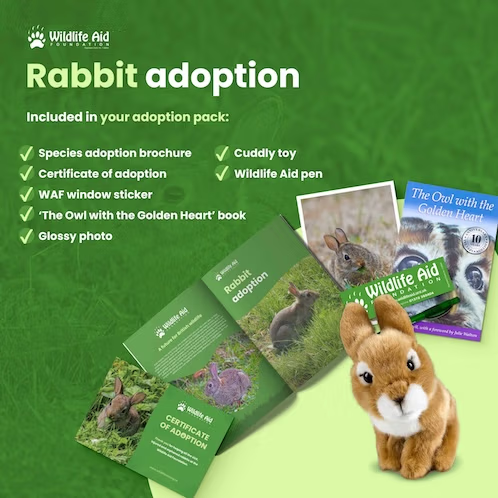European Rabbit
Life History
Length: 75-100cm
Tail: 15cm
Weight: 7-13kg (in spring) 15-17kg (in autumn, ready for winter torpor)
Diet: Omnivorous; around 80% of their diet consists of earthworms, outside of earthworms they will eat: fruits, cereals, small rodents, slugs, and other invertebrates. When desperate for food, they have been known to prey on hedgehogs.
Average Lifespan: 5-8 years
When to see them: All year round, but less active over the winter period.
UK population: 357,000 (est in 2018)
UK conservation status: Protected in the UK.

About
Rabbits are members of the family Leporidae in the order Lagomorpha.
They are staples of the great British countryside, but rabbits aren’t original native species. Rabbits were brought over by the Normans a thousand years ago, with the species now considered naturalised and found throughout the UK.
Rabbits are one of the world’s most recognised species and have been a constant fixture of our childhood stories. Famous characters, such as Bugs Bunny, Peter Rabbit, and Rabbit from Winnie the Pooh, have provided us great entertainment, over the years.
Did you know:
Although hares and rabbits look similar, they are, in fact, separate species. Hares are bigger than rabbits, have longer ears, and are less social than bunnies.
A female rabbit is called a doe and a male rabbit is called a buck.
A rabbit’s teeth never stop growing.
Behaviour
Rabbits can be active at any time of the day, but their peak activity is usually around dusk and dawn. They live in large social groups, most commonly known as a colony, and their intricate underground warrens or burrows have multiple chambers, entrances and exits.
Rabbits typically give birth after 5-6 weeks, having a litter between 3-7 young. Breeding usually occurs between February and August. The young, known as kits, are born blind, deaf, and almost hairless; they can open their eyes after 10 days and are weaned at around 25 days.


How you can help
There are a number of simple ways you can help rabbits:
- Rabbits like long grass and meadows to hide in; allow some wild grasses and flowers to grow in areas of your garden.
- As rabbits favour farmland and arable fields, farmers can improve cover and grazing conditions by maintaining and creating hedgerows and small woodlands.
- Rabbits often like to graze on roadsides; slow down at dawn and dusk to avoid road collisions.
Frequently Asked Rabbit Questions
I've found an injured rabbit
If the rabbit is approachable, using a thick towel, pick the animal up and place it in a secure carrier or box, and contact your nearest wildlife rescue. If out of hours take the animal to your nearest vet. All vets have a duty of care to admit wildlife at no cost to members of the public.
I've found a domestic rabbit
If you have found a domestic rabbit, it is likely to be someone’s pet, and thus may be microchipped. Take the animal to your nearest vet, where they will be able to scan it for a microchip and possibly locate its owner.
There's a rabbit with infected looking eyes, not moving
The rabbit is most likely suffering from Myxomatosis, a viral disease that causes swelling to their eyes, nose and anogenital area.
It is highly contagious to other rabbits, and so please place the animal into a box and contact a local rescue or vet, but do not take the patient into the hospital area before speaking to a professional.
I've found a rabbit kit, can I keep it?
Rabbits are incredibly difficult to hand rear and should always be reared by an experienced professional.
They will also exhibit wild rabbit behaviours, unlike those of a friendlier domesticated rabbit species. Rabbits can become easily stressed in a captive environment and, as a social species, will need to be reared with other kits.
I've disturbed a rabbits nest, what do I do?
If the kits are uninjured and wriggling around, cover the nest back over and monitor for mum’s return. This could take a couple of hours. If no parent returns, place the kits into a warm box and contact your nearest wildlife rescue.

What’s included in your rabbit adoption pack
Not only will you be providing invaluable care and helping countless animals, but you will also receive an exclusive rabbit adoption pack, including cuddly toy, species brochure, certificate of adoption, photo and more. NOTE: The pack will include either ‘The Owl with the Golden Heart’ book or ‘Wildlife SOS’ book, dependent on stock.